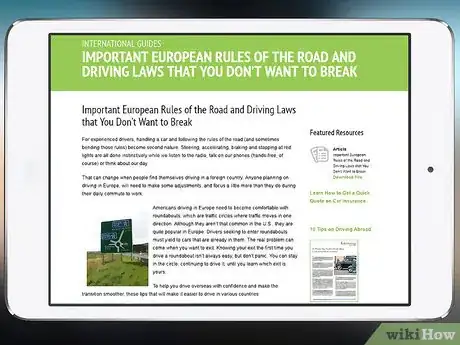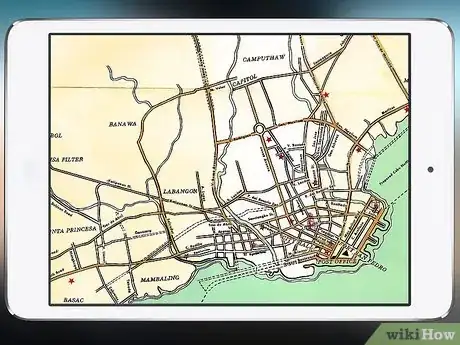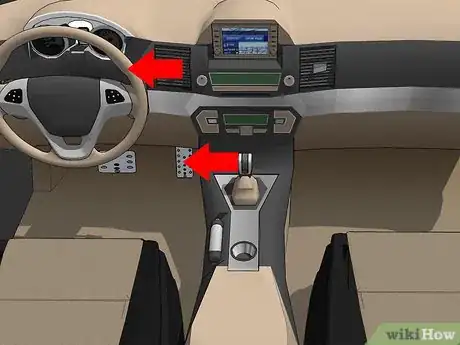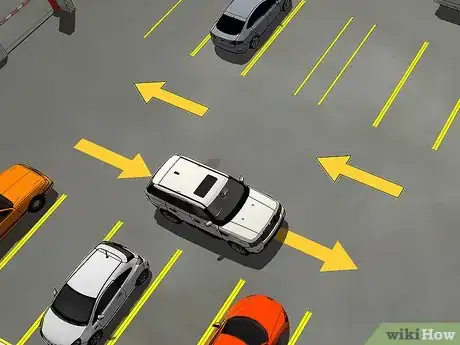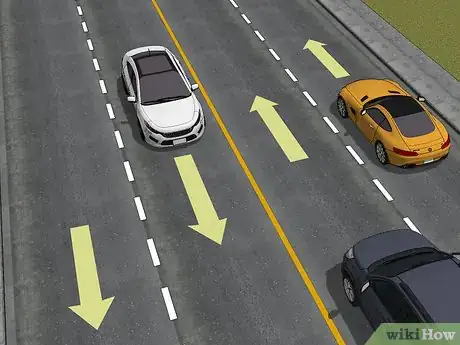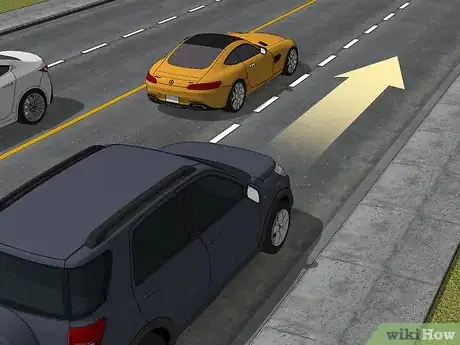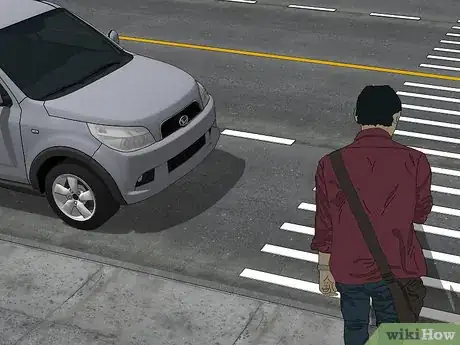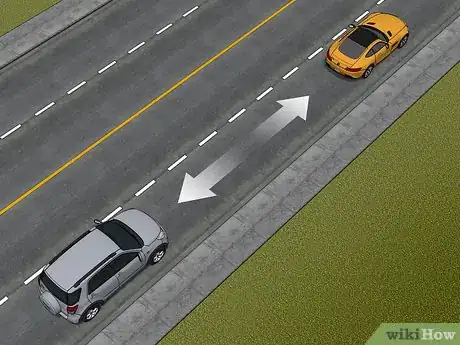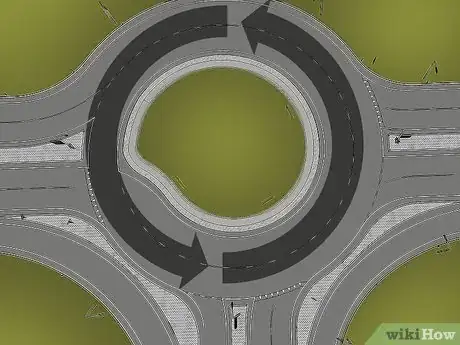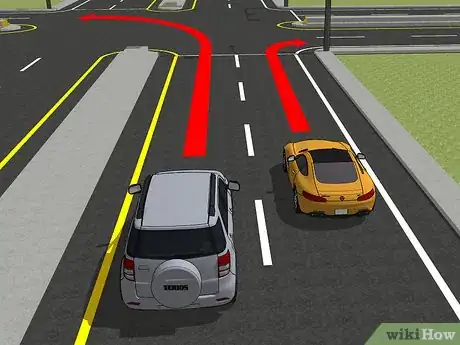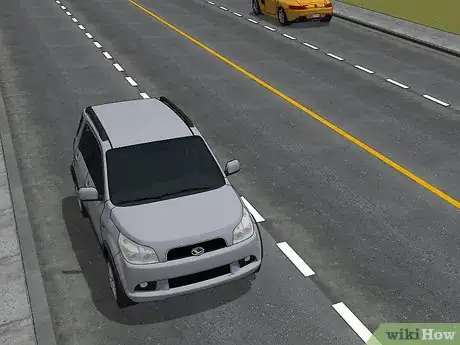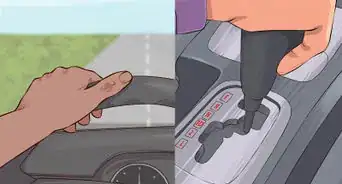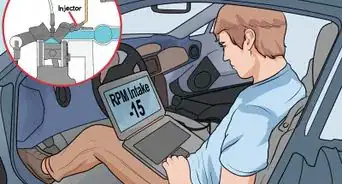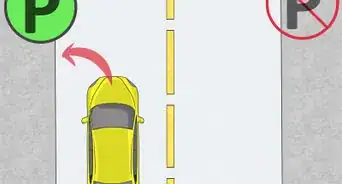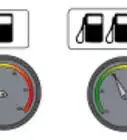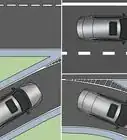This article was co-authored by Simon Miyerov. Simon Miyerov is the President and Driving Instructor for Drive Rite Academy, a driving academy based out of New York City. Simon has over 8 years of driving instruction experience. His mission is to ensure the safety of everyday drivers and continue to make New York a safer and efficient driving environment.
There are 10 references cited in this article, which can be found at the bottom of the page.
wikiHow marks an article as reader-approved once it receives enough positive feedback. In this case, 100% of readers who voted found the article helpful, earning it our reader-approved status.
This article has been viewed 208,436 times.
About a quarter of the world's population live in countries where people drive on the left-hand side of the road (e.g. Australia, Jamaica, Japan, Pakistan, India, Ireland, Malaysia, Nepal, New Zealand, Singapore, South Africa, and the UK). If you are from one of those countries but moving to or traveling in one where the driving is on the right-hand side, you've got some work to do before you start driving.[1]
Steps
Taking Precautions
-
1Research driving laws for the country you are traveling to. Some countries have different road rules and road signs, so it's important to know what you're doing before you get on the road. Study up on the areas that you plan on traveling to, and get well-acquainted with their rules of the road before driving in that country. Don't forget that you might need to brush up on a different language depending on the country you'll be driving in as some road signs might be written instructions rather than visual signs, so know before you go.[2]
-
2Research the area on your map. Before you leave, study the area you'll be traveling in. Get to know the surrounding attractions on each route you take to get to your destination. It'll be harder to get lost if you can remember some key points of interest that can keep you headed in the right direction.Advertisement
-
3Store a map in your car. Make sure you have your map on-hand at all times when driving in another country. A GPS is a convenient way to get around, but may have poor signal in some areas.[3]
-
4Adjust your headlights. Purchase headlamp converters to ensure your headlights are adjusted for driving on the right. Make sure you buy ones that have clear instructions and are easy to remove. Follow the instructions on the package when putting the stickers on the headlights.[4]
-
5Put a reminder on your steering wheel or dashboard. Label a sticky note with the words “Drive on the Right” so you remember to stay on the right when you drive. Drivers get so used to driving on one side of the road that it's easy to fall into the routine of driving on that side. You wouldn't want to forget the drive on the right-hand side, as that could lead to accidents.[5]
-
6Make a “breakdown” plan. Keep a list of reliable people or companies you can call to help you if your car breaks down. This way, you won't have to ask people you don't know who might speak a different language for help. Consider applying for insurance that will cover your car if it breaks down in the country you're in.[6]
-
7Find the steering wheel and the gearstick. In countries where one drives on the right-hand side of the road, the cars are built so that the driver sits on the left-hand side of the car instead of the right. Also, changing gears is done with the opposite hand.
- No matter what country you're in, the pedals will always be in the same position from left to right.[7]
-
8Practice in a car park. Before you drive on a public road, practice driving on the right-hand side and parking in a designated car park so you can build up some confidence before you go on the road. You'll find that you're more prepared and more accustomed to this different way of driving when you start to drive on public roads. Without practice, it's possible to become distracted by trying to remember how to drive on the right.[8]
Driving Cautiously
-
1Take in your surroundings. If you get confused, take a moment to look at the road signs around you. If they're facing you, you're going in the correct direction — that is, unless the signs read "Wrong Way" or "Do Not Enter"!
- Oncoming traffic is seen coming from the left.
- Left-turning traffic must cross oncoming traffic.
- Traffic signs facing motorists are mostly on the right-hand side of the road.
-
2Drive in the far right lane. Because you are a new learner, keep in mind that the "fast" lane is the left lane and the "slow" lane is the right lane, which is the opposite of what you're used to. (In both cases, however, it is the lane farthest from the oncoming traffic.) Let fast drivers pass on your left.
- When you need to pass other drivers, give a left turn signal, move to the left, pass, signal right, and move in front.
-
3Watch for pedestrians. Check your mirrors for pedestrians and be aware of your surroundings at all times. Normally, pedestrians are supposed to be walking on their left-hand side of the road, facing traffic, but human nature applies here, as in your home country: they can be anywhere.[9]
-
4Keep a farther driving distance in front of you. Make sure the cars in front of you are farther ahead of you than you're used to.[10] This way, you'll have more time to react to their driving.[11] Stay four to five seconds behind the car in front of you, just like you would do when it's raining or snowing.[12]
-
5Remember that roundabouts go counterclockwise. Get used to the counterclockwise rotation of roundabouts in places where you drive on the right side of the road. Remember to give the right of way to the left. Drive through roundabouts slower than what you're used to.[13]
-
6Make turns with care. Signal in plenty of time to let other drivers know what you are doing, and make any necessary adjustments. Be sure to check all mirrors before turning or changing lanes.
- Make a left turn by getting as close as possible to the left-most lane, nearest the median strip (in a divided road) or the center of the road (when oncoming traffic is immediately adjacent). When completing your turn, you will cross traffic going opposite your original direction and traffic going opposite your intended direction. Be sure you end up in the right half of any two-way road, but in the left lane (if there is more than one).
- To make a right-hand turn, stay close to the curb or the edge of the road and do not cross any traffic when completing your turn.
-
7Take breaks. Driving in unfamiliar territory can be exhausting and stressful. Taking regular breaks will allow you to take a minute to relax before you get on the road again.[14]
-
8Use the same steps when you go back home. You'll need to get used to driving on the left-side of the road again once you get back home. These steps should help with the adjustment back to your regular driving routine.[15]
Community Q&A
-
QuestionWhat is the best online driving simulator as a tutorial for someone used to driving on the left and who wants to practice driving in Europe?
 Community AnswerTry Driving School Simulator 2016 on iOS or Android.
Community AnswerTry Driving School Simulator 2016 on iOS or Android. -
QuestionCan you take a lesson in a left-hand driving?
 Community AnswerYou can take driver's education courses in the country that you're traveling to or moving to when you get there. Some countries even offer courses in driving on the opposite side of the road so people can be prepared to drive when they travel abroad.
Community AnswerYou can take driver's education courses in the country that you're traveling to or moving to when you get there. Some countries even offer courses in driving on the opposite side of the road so people can be prepared to drive when they travel abroad. -
QuestionWhat side of the road do they drive on in France?
 Community AnswerLike most of Europe, they drive on the right side in France.
Community AnswerLike most of Europe, they drive on the right side in France.
Warnings
- Don't drink and drive no matter what side of the road you are driving on.⧼thumbs_response⧽
References
- ↑ http://www.worldstandards.eu/cars/driving-on-the-left/
- ↑ https://www.clements.com/resources/articles/What-You-Need-to-Know-about-Getting-an-International-Driving-Permit
- ↑ https://www.clements.com/resources/articles/What-You-Need-to-Know-about-Getting-an-International-Driving-Permit
- ↑ https://www.rac.co.uk/drive/travel/driving-abroad/when-you-get-there/
- ↑ http://www.theaa.ie/blog/25-of-women-too-nervous-to-drive-abroad/
- ↑ http://www.theaa.ie/blog/25-of-women-too-nervous-to-drive-abroad/
- ↑ https://wikitravel.org/en/Driving_in_Australia
- ↑ http://www.theaa.ie/blog/25-of-women-too-nervous-to-drive-abroad/
- ↑ http://www.theaa.ie/blog/25-of-women-too-nervous-to-drive-abroad/
- ↑ Simon Miyerov. Driving Instructor. Expert Interview. 4 December 2019.
- ↑ http://www.drivingtesttips.biz/driving-on-the-right.html
- ↑ https://www.defensivedriving.com/safe-driver-resources/how-to-maintain-a-space-cushion-around-your-vehicle/
- ↑ http://www.drivingtesttips.biz/driving-on-the-right.html
- ↑ https://www.rac.co.uk/drive/travel/driving-abroad/when-you-get-there/
- ↑ http://www.bbc.com/autos/story/20150423-driving-on-the-other-side-of-the-road
- ↑ Simon Miyerov. Driving Instructor. Expert Interview. 4 December 2019.
- ↑ http://www.huffingtonpost.com/rita-anya-nara/driving-in-a-foreign-coun_b_5354137.html
About This Article
Driving on the right side of the road can be tricky if you're not used to it, but by paying attention to your surroundings and staying calm, you can do it. When you first start driving on the right side of the road, put a sticky note on your dash reminding you to stay on the right side. If you get confused when driving, just look at the road signs to see which way they’re facing. Pay extra attention to your mirrors so you’re aware of any pedestrians or vehicles around you. Drive farther back from the car in front of you to give you some extra time to make adjustments. If you find yourself getting stressed out while driving, pull over and take a short break to calm yourself. For more tips, including how to adjust your headlights for driving on the right, read on!
